We walk through a not immediately obvious entrance towards the Clementinum. Part of the baroque building can be visited as part of a guided tour and we were very excited to see what awaited us.
The dates for the tours, which are offered in Czech or English, are very popular. We had booked our tickets in advance online via Get Your Guide, other visitors were put off to other days on site because the tickets were already sold out.
Looking back
The Jesuit order came to Prague in 1556 at the invitation of Emperor Ferdinand, then Prince of Bohemia. The Jesuits were to build a grammar school with a boarding school in a dilapidated former Dominican monastery. They were even granted the right to award academic degrees.
The beginning was not easy, neither for the Jesuits nor for the students and teachers. Not only was the building dilapidated, there was also a lack of money to make improvements. It was not until the end of the 16th century that the Jesuits received more financial support, which made restoration and new building work possible.
In 1616, the Clementinum was elevated to the status of a Catholic university. Later, the Jesuits also took over the management of Charles University in Prague. Since 1654, the Clementinum has been united with Charles University by order of the Emperor of the time.
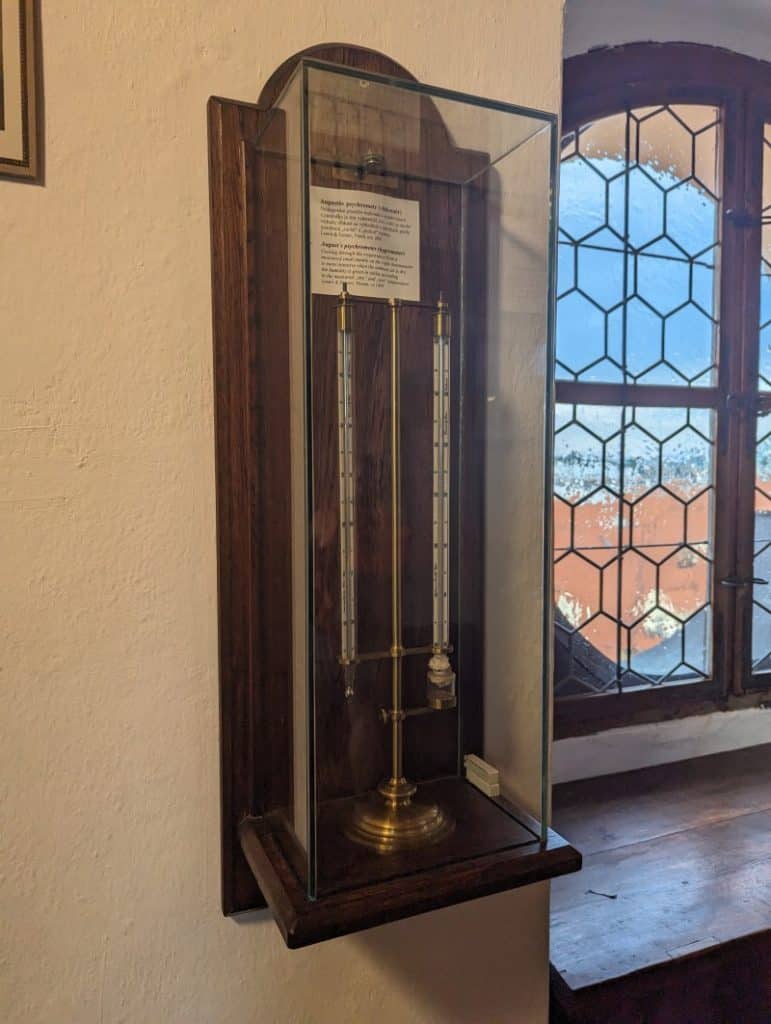
A period of expansion now began for the Jesuits. They acquired numerous plots of land in Prague and built the second largest building complex in the city there by 1726. There was an observatory, for example, and even a maths museum opened its doors.
The Jesuit order was abolished in 1773. All the property passed to the Crown, which made it available to various institutions.
Today, the Clementinum houses the National Library and the Astronomical Institute. The National Library in Prague is one of the largest and oldest libraries in the country and is housed in several locations.
The origins of the book collection date back to the 13th century in the Dominican monastery in the old town. When the monks of the Jesuit order took over the monastery building, the book collection was also taken over. When the order was abolished, the library also became state-owned and Marie Thereisia declared it a “public k. k. university library”. It brought together various collections that were to be found in the Clementinum from 1777.
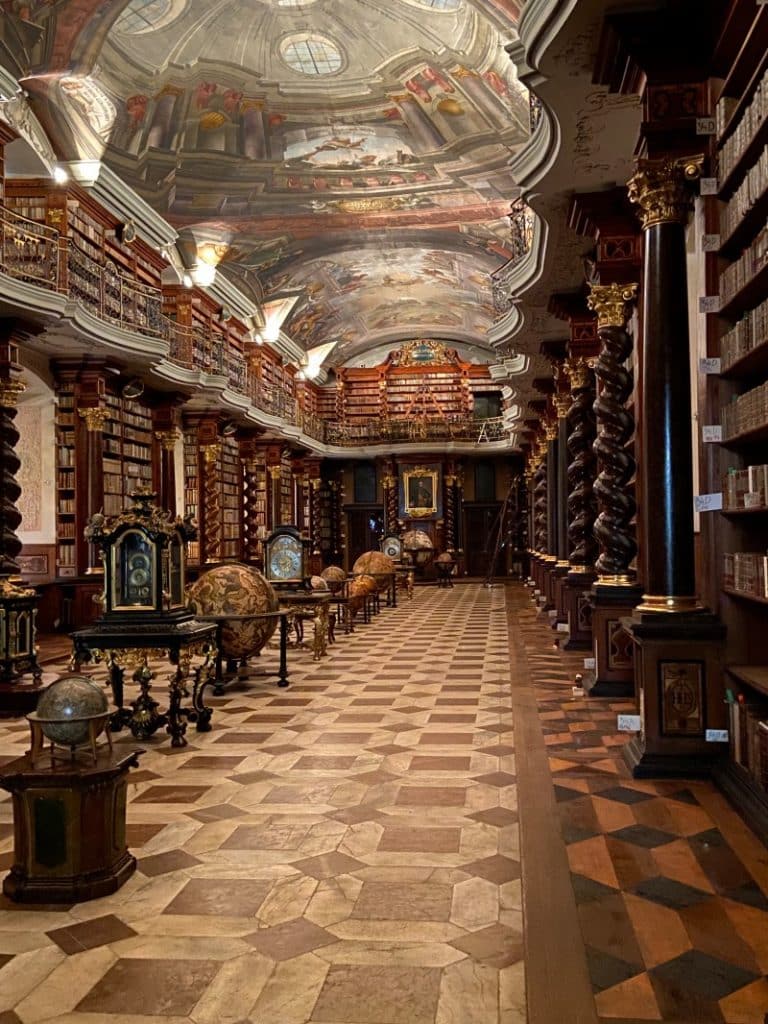
Guided tour through the Clementinum
The tour starts on the ground floor right by the ticket office. As it was an English tour, we were given a short summary of the most important points in German. However, I didn’t read this as the guide explained everything very well and in a way that was easy to understand.
The tour has three main points and a few “smaller” stops where the guide tells us something. The really important and most interesting points are the Baroque Library, the Astronomical Tower and the Meridian Hall. The tour lasts around 50 minutes.

Meridian Hall in the Clementinum
The Meridian Hall (Meridiánová síň) with an exhibition of historical astronomical instruments is located on the 2nd floor of the Astronomical Tower.
This unique room used to serve as a giant camera obscura or noon fibre or slit sundial. The midday time was determined with the help of a thin beam of light. This fell through a slit in the wall. With the help of a string stretched across the floor, it was possible to determine the time. The exact time of midday, when the sun is at its highest point in its imaginary orbit, could be read with great precision. In order for the device for determining midday to work throughout the year, the string had to be stretched across the room, as the angular distance between the sun and the earth’s equator changes throughout the year.
During the tour, the principle was actually explained to us quite clearly. However, as it was already 6 pm, we couldn’t tell the time.
On the walls of the hall there are also two original astronomical instruments, so-called wall quadrants, which the scientists used to measure the position of the stars.

Astronomical tower
If you look at the Astronomical Tower from below before the tour, you will recognise the interesting spire. At the highest point is a figure of Atlas carrying a celestial sphere on his shoulders. The figure is 2.4 metres tall and weighs 600 kg. The celestial sphere depicted is a historical astronomical instrument. It was once used to measure and predict the positions of stars and planets in the sky and to measure time.
There is still a sundial on the east side of the tower today. On the west side of the tower, only the rods that were once the hands of the sundial can be seen today.
The 68 metre high Astronomical Tower (Astronomická věž Klementina) was used for astronomical observations between 1751 and 1938. Meteorological measurements were also taken there. Scientists began an uninterrupted series of daily meteorological measurements on 1 January 1775. In addition to temperature and air pressure, they recorded the amount of precipitation, the presence of clouds, the appearance of the sky, the strength and direction of the wind, thunderstorms and other weather events.

I find it very interesting that for almost 80 years, lunchtime was announced to the people of Prague from the tower. A flag was hung from the gallery of the tower at 12 o’clock sharp. It was not until 1925 that the radio took over this task. The time from the Clementinum was then transmitted by radio at midday and the flag lost its significance. The flag ceased to be hung in 1928.

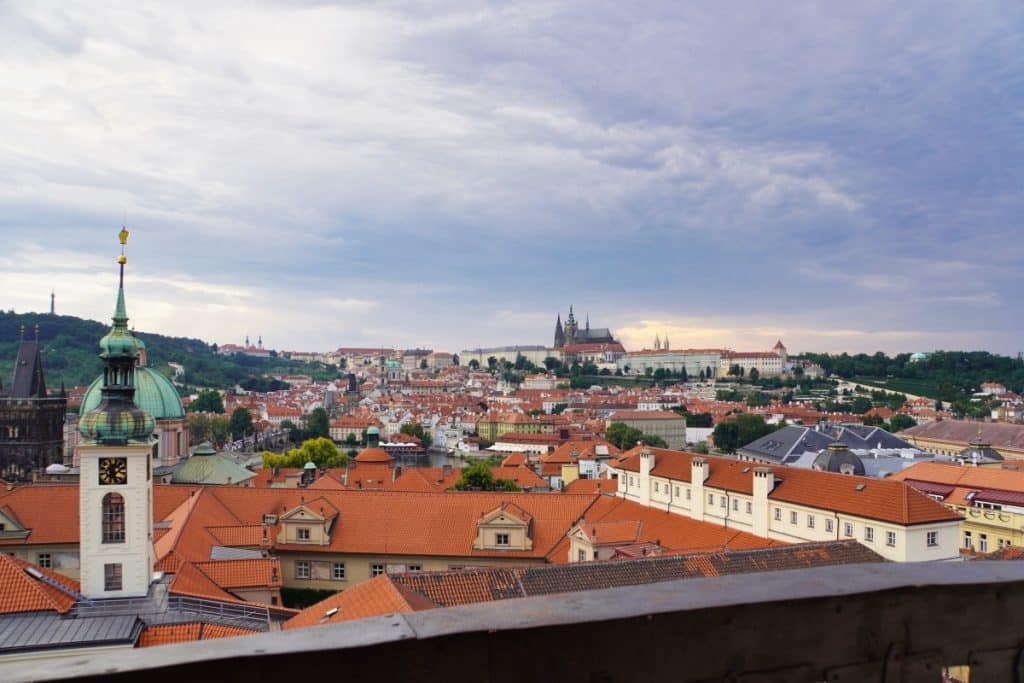
Today, the tower is one of the most beautiful vantage points in the city. A viewing platform at a height of 52 metres can be reached via 172 steps. From up there, you have a wonderful view over Prague’s Old Town. The Clementinum building complex can also be seen from up there.
Baroque library
My personal highlight during the tour was the view into the Baroque Library (Barokní knihovna Klementina). The door to the beautiful room was still closed at first. The guide explained to us that this door may only be opened briefly to protect the books. You are not allowed to enter the room, but from the open door you have a great view into the room. However, I have read that the books are also available for readers in separate rooms on special request.

The beautiful rooms were probably completed in 1727 according to the plans of Kilian Ignaz Dietzenhofer, a famous Baroque architect. The room is said to be one of the oldest hall-galleries in Bohemia to have survived in its original form.
What an impressive hall. At 41 metres long and 12 metres wide, I also find it quite large. A gallery leads around the room. The baroque library hall is decorated with beautiful frescoes by John Hiebel on the subject of science and art. The ceiling painting is very impressive.

The hall houses a collection of foreign-language printed theological literature and several large, historically valuable globes. The library’s collection comprises around 27,000 volumes, mainly from the field of theology, but also from the fields of philosophy, rhetoric, linguistics and natural sciences. The books are displayed on oak shelves and can also be found on the surrounding gallery.
Address:
Mariánské nám. 5,
110 00 Prag, Tschechien
Opening hours:
January-March
daily: 10-18 h
April-September
daily: 9-20 h
October-December
daily: 9-19 h
Entrance fee:
Adults: CZK 300




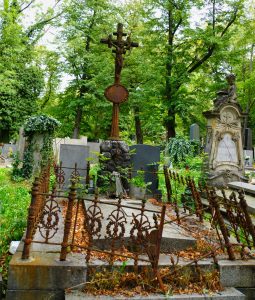












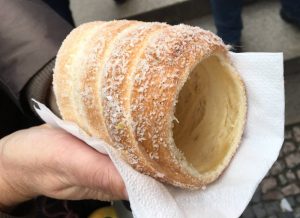















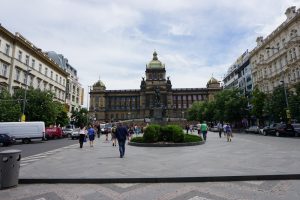



Leave a Reply